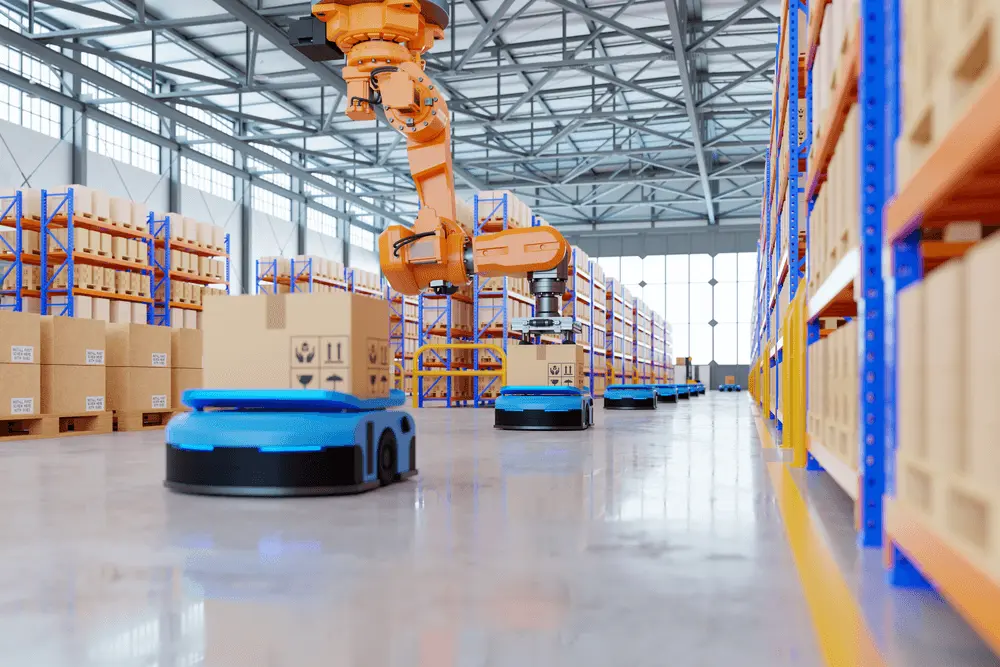
The Rise of Smart Warehousing in the USA
Warehousing in the USA is undergoing a seismic shift, transitioning from traditional models to tech-driven “smart warehouses.” These facilities leverage advanced technologies like automation, IoT, and AI to optimize operations. With the meteoric rise of e-commerce and consumer expectations for same-day delivery, the demand for smarter, faster, and more efficient warehousing solutions has skyrocketed.
In this article, we’ll explore the phenomenon of smart warehousing and its transformative role in logistics.
Key Features of Smart Warehousing
Automation and Robotics
One defining aspect of smart warehousing is the use of automation and robotics. Automated guided vehicles (AGVs), robotic arms, and conveyor belts streamline tasks like sorting, picking, and packing. This not only increases speed but also minimizes human error, resulting in a smoother workflow.
IoT Integration
Smart warehouses rely on IoT-enabled devices to track and monitor goods in real-time. Sensors and RFID tags provide accurate data on inventory levels, ensuring timely replenishment and reducing overstocking or understocking issues.
Data Analytics and AI
By using data analytics, warehouses can predict trends, optimize stock levels, and reduce waste. AI-driven algorithms analyze vast datasets to provide actionable insights, like which products to prioritize during peak seasons.
Cloud-Based WMS
A cloud-based Warehouse Management System (WMS) centralizes data and processes, making it easier to manage operations from anywhere. These systems allow seamless integration with other supply chain software, ensuring end-to-end visibility.
Drivers of the Smart Warehousing Revolution
E-commerce Boom
The e-commerce industry has disrupted traditional supply chains. Companies like Amazon and Shopify have set new benchmarks for delivery speed, compelling warehouses to adopt smarter systems.
Demand for Faster Delivery
Consumers expect next-day or even same-day delivery, pushing logistics providers to implement technology that ensures speed and accuracy.
Labor Shortages
The ongoing labor crisis in the USA has forced companies to invest in automation to fill workforce gaps. Robots, unlike humans, can work 24/7 without breaks, ensuring continuous productivity.
Technological Advancements
Advancements in AI, IoT, and robotics have made smart warehousing more accessible and cost-effective, driving widespread adoption.
Benefits of Smart Warehousing
Operational Efficiency
Automation reduces manual effort, speeding up processes like picking and packing while lowering operational costs.
Inventory Management
IoT devices provide real-time inventory data, enabling precise tracking and forecasting. This results in fewer stockouts and better inventory turnover rates.
Error and Cost Reduction
Smart systems reduce human errors and associated costs, making operations more reliable and budget-friendly.
Sustainability
Energy-efficient robots and IoT-enabled devices help reduce waste and carbon emissions, aligning with green logistics trends.
Challenges and Barriers to Adoption
High Initial Costs
The upfront investment in technology, training, and infrastructure can be prohibitive for small businesses.
Integration Complexities
Integrating smart systems with legacy software and processes often requires substantial effort and expertise.
Cybersecurity Risks
With increased reliance on interconnected devices, warehouses are more vulnerable to cyberattacks, necessitating robust security measures.
Workforce Adaptation
The shift to smart warehousing demands a skilled workforce capable of managing advanced technologies, creating a gap in expertise.
Future Trends in Smart Warehousing
Autonomous Technologies
The future of warehousing includes drones for deliveries and autonomous vehicles for goods movement.
Green Logistics Integration
Sustainability will become a core focus, with warehouses adopting energy-efficient systems and renewable energy sources.
Predictive Analytics
Warehouses will increasingly rely on predictive analytics to forecast demand and optimize operations in real-time.
How Businesses Can Transition to Smart Warehousing
For SMEs
Small businesses can start with incremental changes, like introducing IoT devices or automating a single process.
Collaboration
Partnering with technology providers can simplify the transition, offering tailored solutions and support.
Gradual Adoption
Instead of a full overhaul, companies can adopt smart technologies gradually, mitigating risks and costs.
Conclusion
Smart warehousing is more than a trend; it’s a necessity for businesses looking to thrive in today’s fast-paced economy. By leveraging technologies like drones, automation, IoT, and AI, companies can enhance efficiency, reduce costs, and stay competitive. While challenges remain, the long-term benefits of smart warehousing outweigh the initial investment, making it a crucial step for the future of logistics in the USA.
FAQs
What is smart warehousing?
Smart warehousing refers to the use of advanced technologies like IoT, automation, and AI to optimize warehouse operations.
What technologies power smart warehouses?
Key technologies include robotics, IoT, data analytics, AI, and cloud-based WMS.
Can small businesses adopt smart warehousing?
Yes, small businesses can gradually introduce affordable solutions to transition into smart warehousing.






